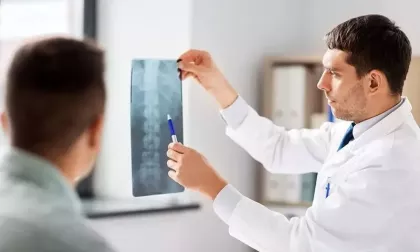7 Reasons Your Orthopedic Doctor May Want to Get an X-ray

We examine how X-rays work and the reasons your doctor might want to use them in your diagnosis.
Staying physically active is important to your overall health, and there are a wide variety of activities to help with that, including sports, weightlifting, running, walking, and yoga.
Regardless of how active you are, injuries are something you’re likely to experience at some point. In 2020 alone, one in six Americans (55.4 million people) sought medical attention for preventable, nonfatal injuries from work, vehicle, and home-related accidents.
If you’re seeking medical assistance for an injury, you’re going to undergo diagnostic testing to determine the extent of your damage and the best course of action to treat your problem. X-rays are a time-honored way to help assess the damage and determine a diagnosis.
Residents of the Medford and Grants Pass, Oregon, areas looking for help with injuries can find it with the extensive team of doctors and skilled medical staff at the Southern Oregon Orthopedics.
Let’s examine how X-rays work and the reasons your doctor might want to use them in your diagnosis.
How X-rays work
From as far back as the first X-ray in 1896, this painless procedure has helped doctors diagnose many types of injuries and determine the best treatment plan. The process exposes the part of your body to be examined to a type of electromagnetic radiation that is similar to visible light.
An X-ray device allows radiation to pass through your body, generating images of tissues and structures in the area being examined.
Reasons to get an X-ray
The highest contrast in an X-ray comes from bones, so they show up best with this method of imaging. This makes this process great for determining a number of things, including:
1. The condition causing an injury
Several conditions can affect bones and joints, including osteoarthritis, scoliosis, rheumatoid arthritis, spondyloarthritis, lupus, gout, or bursitis
2. Structural problems in bones and joints
Structural problems in bones and joints can arise from the conditions mentioned above, accidents, or other forms of trauma. Losing cartilage or other musculoskeletal tissue, for example, can create structural problems in joints.
3. Foreign objects
If you have an accident that lodges a foreign object in your body, an X-ray can help determine where it is and what kind of tissue or bone damage it is doing to effect safe and proper removal.
4. Fractures of bones and joints
When you’re injured, the pain can be terrible, but it’s not always easy to determine whether or not you have a soft tissue injury (a problem in your muscles, ligaments, cartilage, or other tissue) or a possible joint or bone fracture.
5. Treatment options
Even if you know what the problem is, an X-ray can help determine the best options for treatment. It’s also helpful to X-ray an injury as it’s healing to see how things are progressing.
6. Healing time
Once you have the imaging needed to assess the problem, part of the process of determining treatment is estimating how long your injury will take to heal. If there are multiple treatment options, it’s important to know if one requires more or less healing time than another.
7. Evidence of osteoporosis
This is a condition that becomes more prominent as you age, so when your body starts slowing down the production of the hormones that promote bone density, getting a check for osteoporosis will be essential to starting treatment.
So, if you’re dealing with an injury that needs diagnostic imaging, make an appointment with Southern Oregon Orthopedics to start your road to recovery. Call our office most convenient to you or schedule online today.